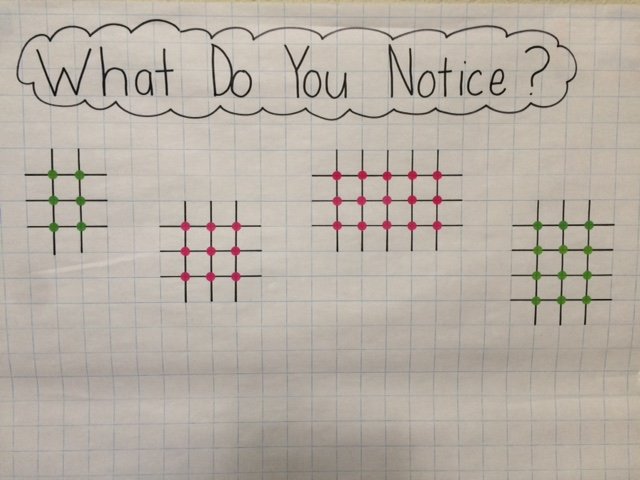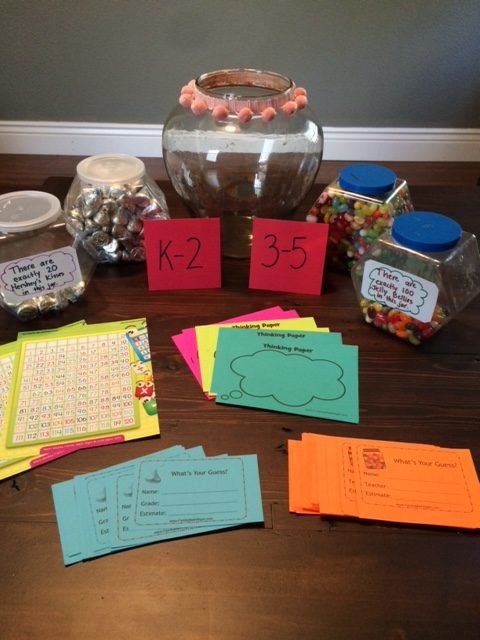What Do You Notice? poster – Crossed Lines

Skills:
K-2: colors, counting, even/odd numbers
3-5: multiplication, even/odd numbers, multiples of 3, square numbers
Crossed lines is an easy strategy for learning multiplication facts. The horizontal and vertical lines represent the factors in the multiplication problem. For example, in the problem 4 x 3, students would draw 4 horizontal lines and then intersect them with 3 vertical lines as is shown in the last example above. The intersection of the lines is the answer to the problem. So for 4 x 3, there would be 12 intersections.
To make the strategy more visible, I used colored dots to highlight the intersections. I was deliberate in the colors I chose. The green dots represent an even product and the pink dots represent an odd product. Notice how all the products are multiples of 3. At a higher level, older students may notice that 3 x 3 makes a square and 9 is a square number.


